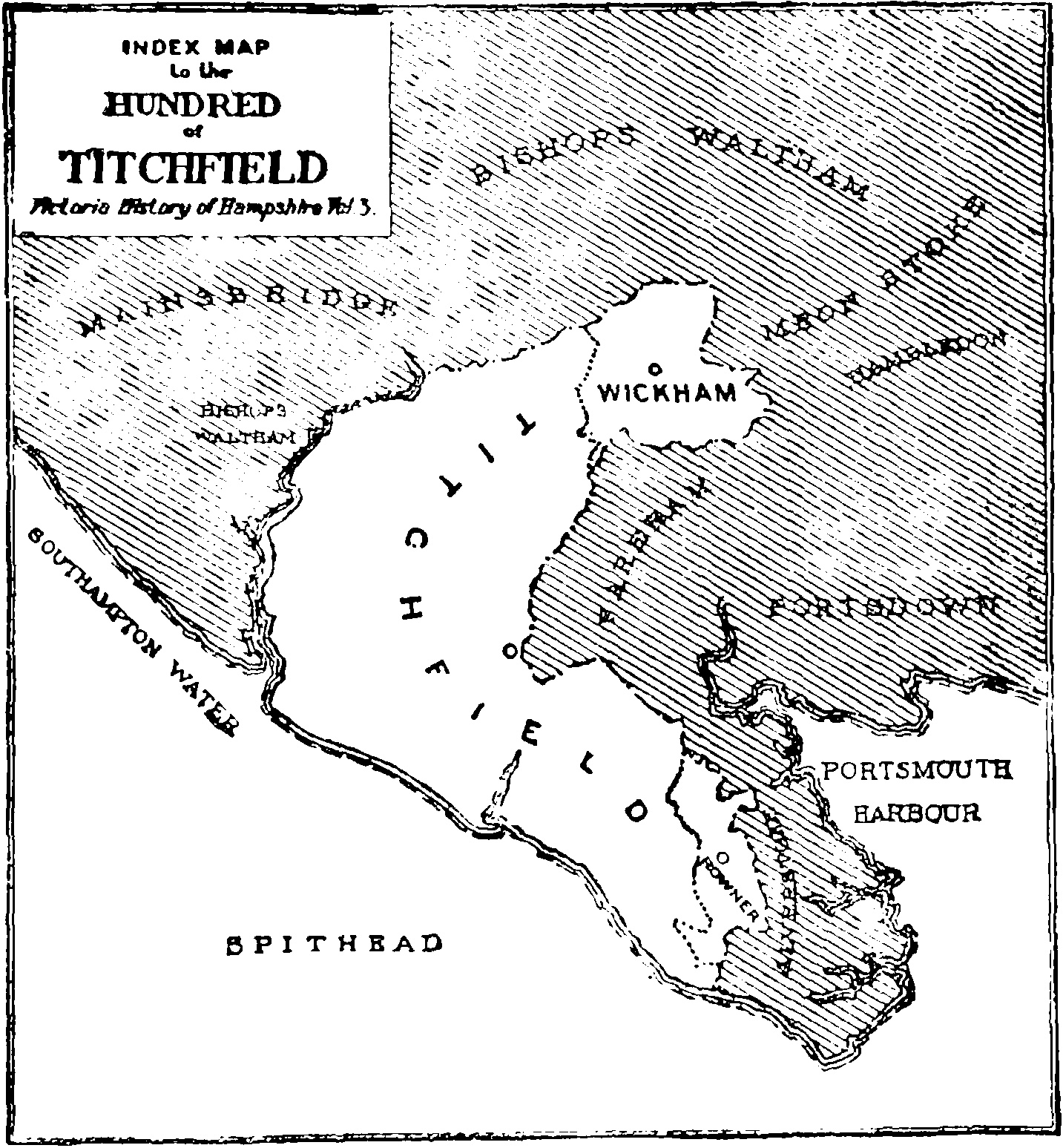A History of the County of Hampshire: Volume 3. Originally published by Victoria County History, London, 1908.
This free content was digitised by double rekeying. All rights reserved.
'The hundred of Titchfield: Introduction', in A History of the County of Hampshire: Volume 3, ed. William Page (London, 1908), British History Online https://prod.british-history.ac.uk/vch/hants/vol3/p217 [accessed 31 January 2025].
'The hundred of Titchfield: Introduction', in A History of the County of Hampshire: Volume 3. Edited by William Page (London, 1908), British History Online, accessed January 31, 2025, https://prod.british-history.ac.uk/vch/hants/vol3/p217.
"The hundred of Titchfield: Introduction". A History of the County of Hampshire: Volume 3. Ed. William Page (London, 1908), British History Online. Web. 31 January 2025. https://prod.british-history.ac.uk/vch/hants/vol3/p217.
THE HUNDRED OF TITCHFIELD
CONTAINING THE PARISHES OF
| ROWNER | TITCHFIELD | WICKHAM (fn. 1) |
The hundred at the time of Domesday included Titchfield, Faccombe, Meon, Bromwich, Bentley, Crofton, Funtley, Wickham, Segenworth, Hook, Stubbington, and Rowner, and it was assessed at 46 hides. (fn. 2) It belonged to the crown and appears to have been farmed occasionally, its value in 1266 being 58s. 4d., (fn. 3) though by the reign of Richard II it was reduced to 30s. (fn. 4) By the beginning of the fourteenth century the area of the hundred had been materially reduced. First the abbot of Titchfield withdrew his suit in respect of his manor of Swanwick in Titchfield parish, and being called upon in 1279 to show by what warrant he claimed to do so, pleaded successfully the charter of Henry III, granting to Titchfield Abbey freedom from service at the courts of the shires and hundreds. (fn. 5) Earlier in the same century Peter des Roches transferred the suit of Bromwich manor to Fareham; in 1279 William de Valence, being summoned for neglecting to pay the suit due from his manor of Hook, pleaded that Hook was a member of his manor of Newton Valence, which was exempted from suit at the courts of the shire and hundred, and his claim was allowed. (fn. 6) In the same year John of Brittany withdrew his suit in respect of his manors of Crofton, Lee Markes, and Funtley, and as he did not appear the sheriff was ordered to distrain upon his land. (fn. 7) These withdrawals had reduced the hundred in the time of Edward I to Wickham, Rowner, Stubbington, and Segenworth. By 1316 Prallingworth and Bonewood had been added and Faccombe and Bentley had been transferred to the hundreds of Pastrow and Thorngate respectively, while the king had recovered his suits of Funtley and Crofton. (fn. 8) In 1651 the hundred consisted of the tithings of Rowner, West Hook, Chark, Wickham, Great Funtley, Little Funtley, and Stubbington, (fn. 9) all of which are in the hundred of Titchfield to-day, with the exception of Prallingworth.

INDEX MAP to the HUNDRED of TITCHFIELD
